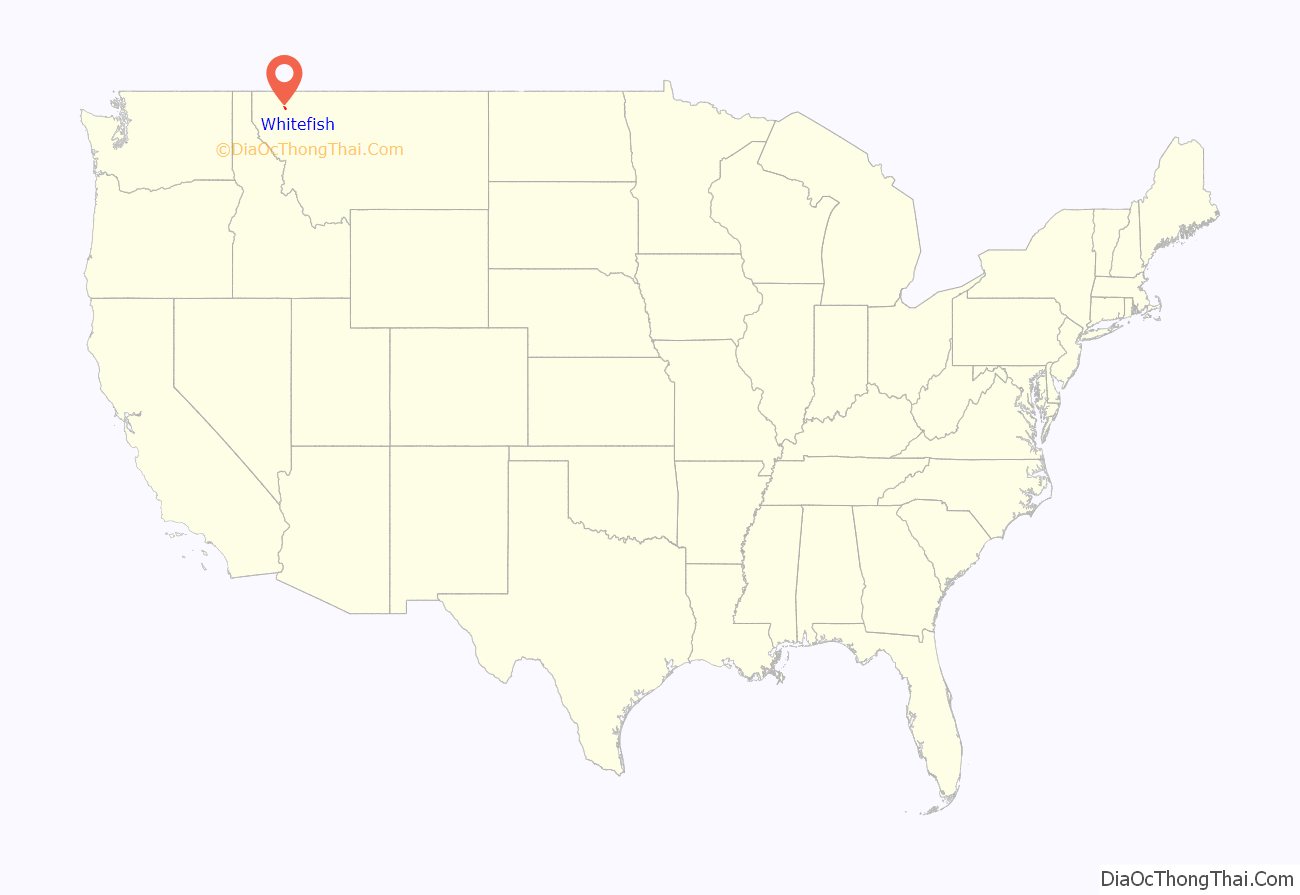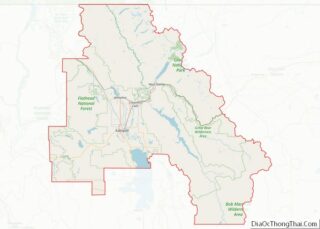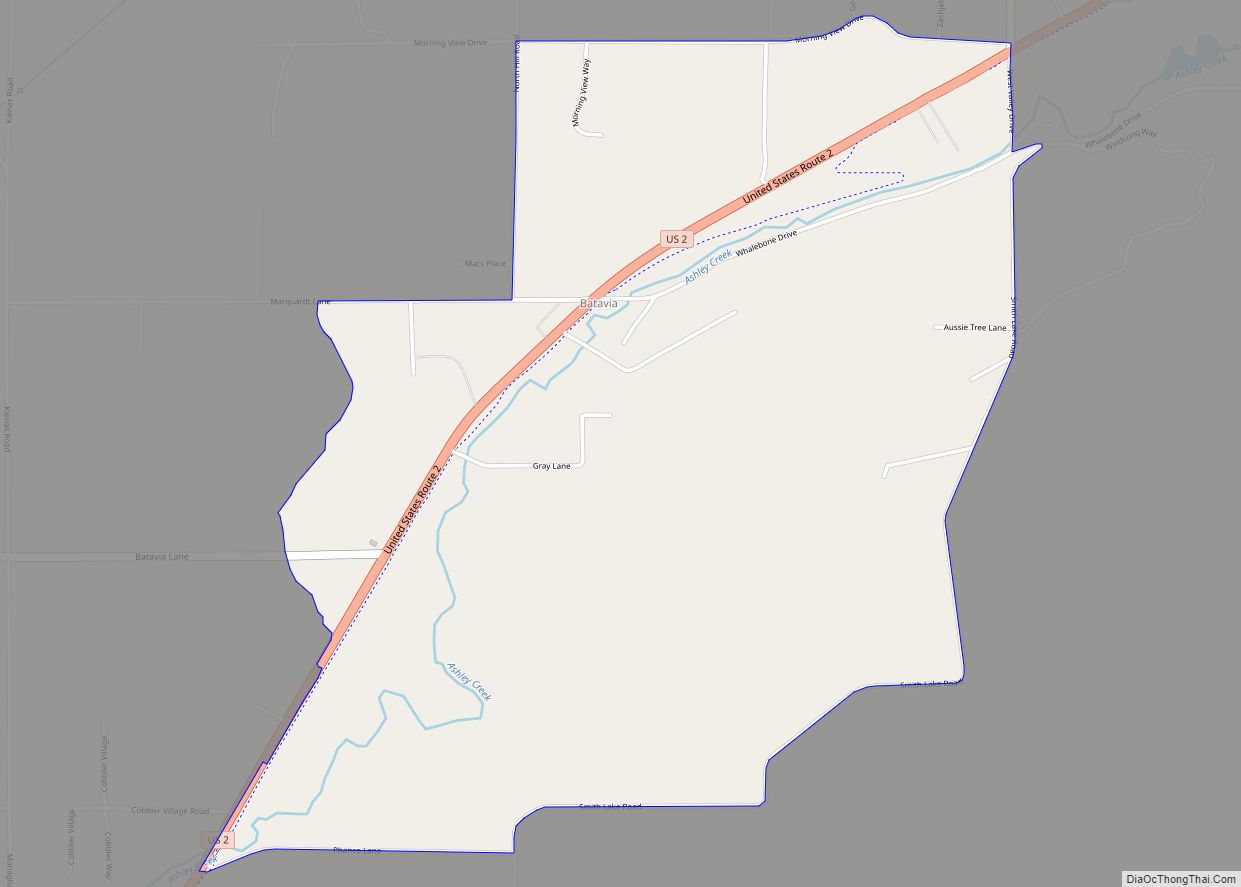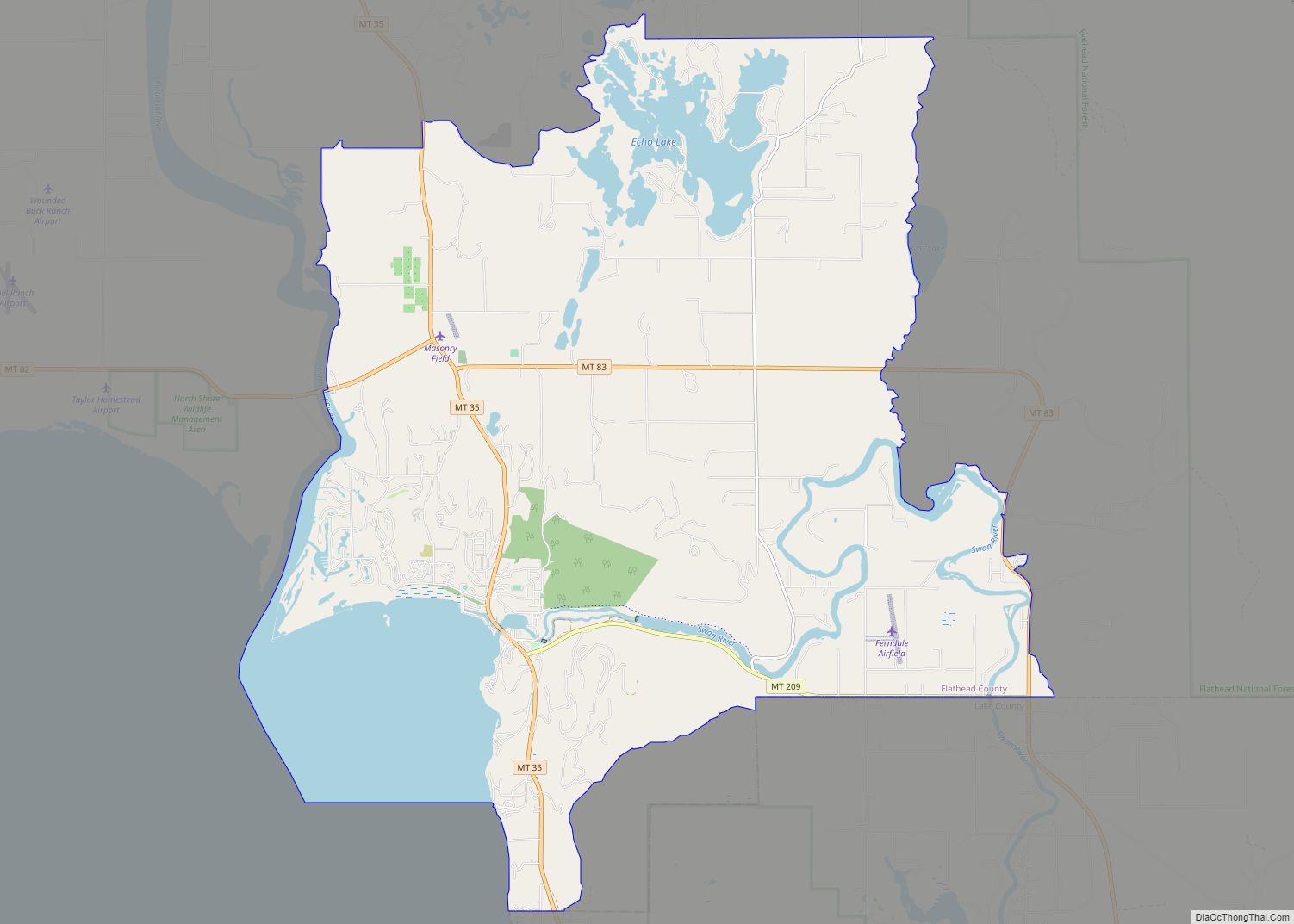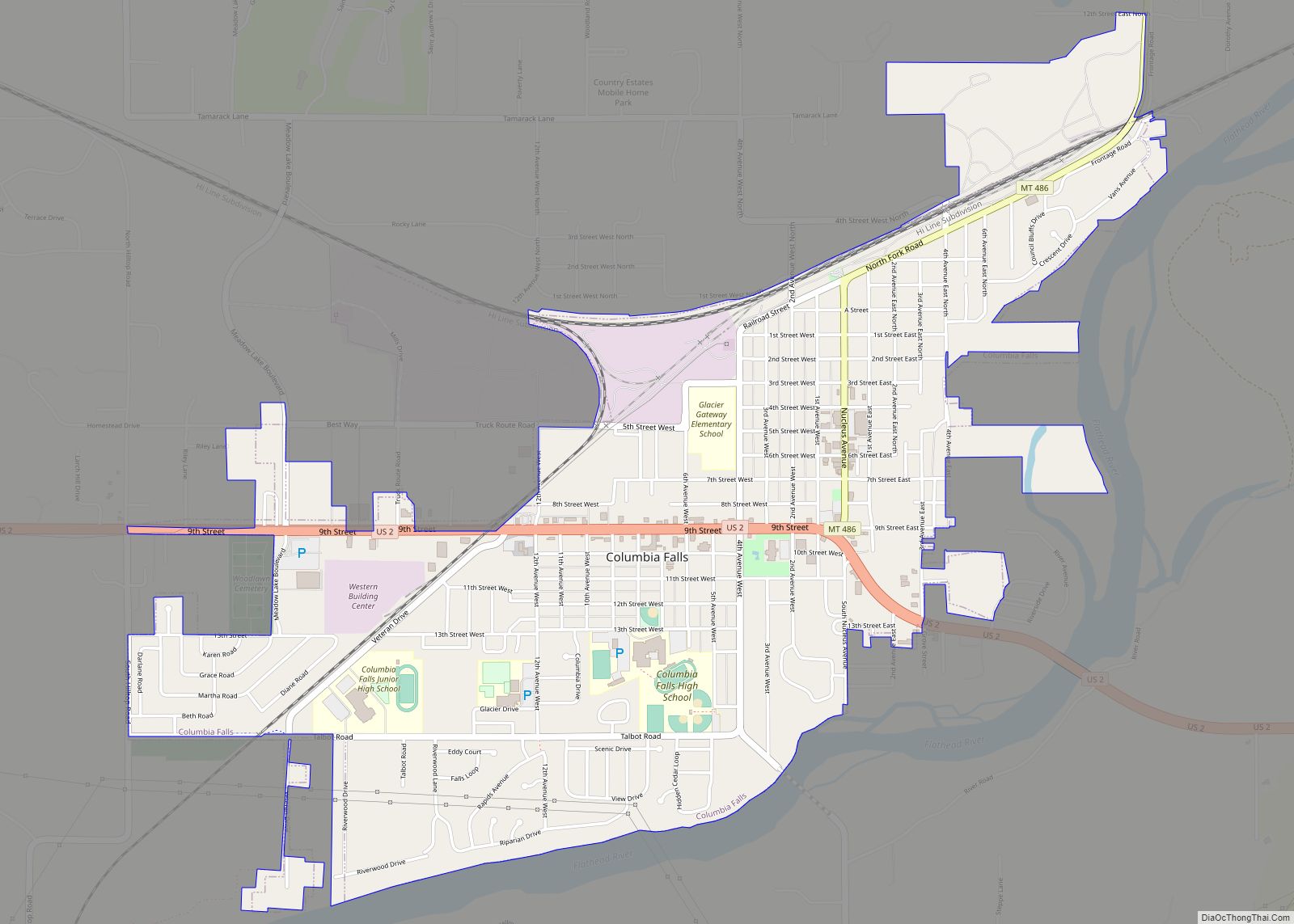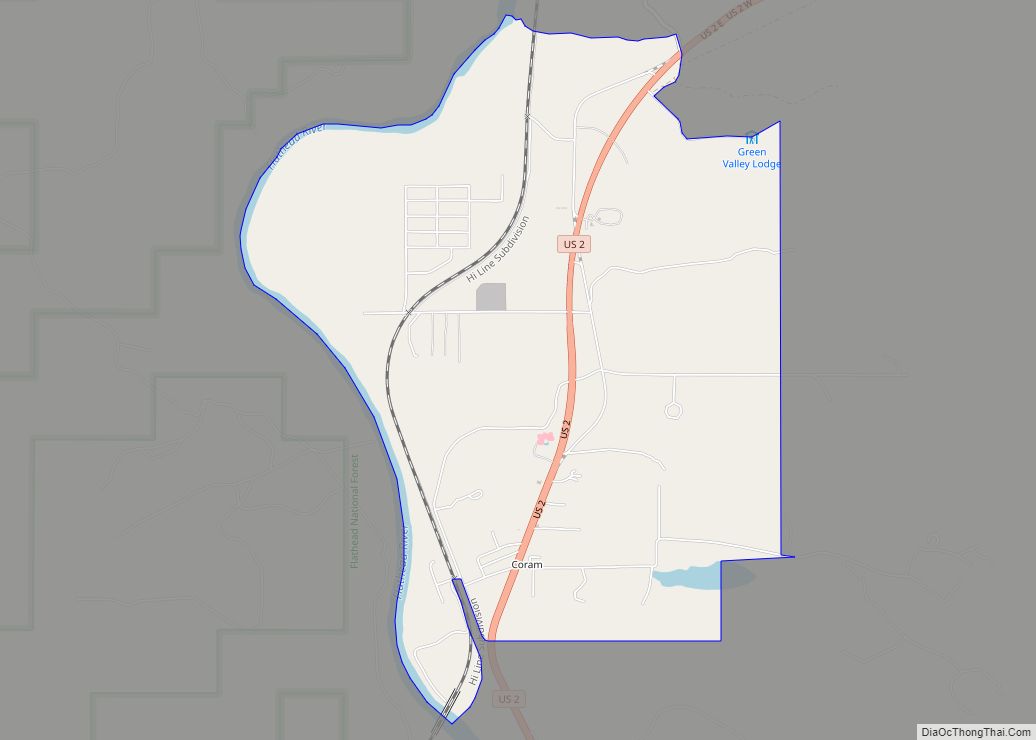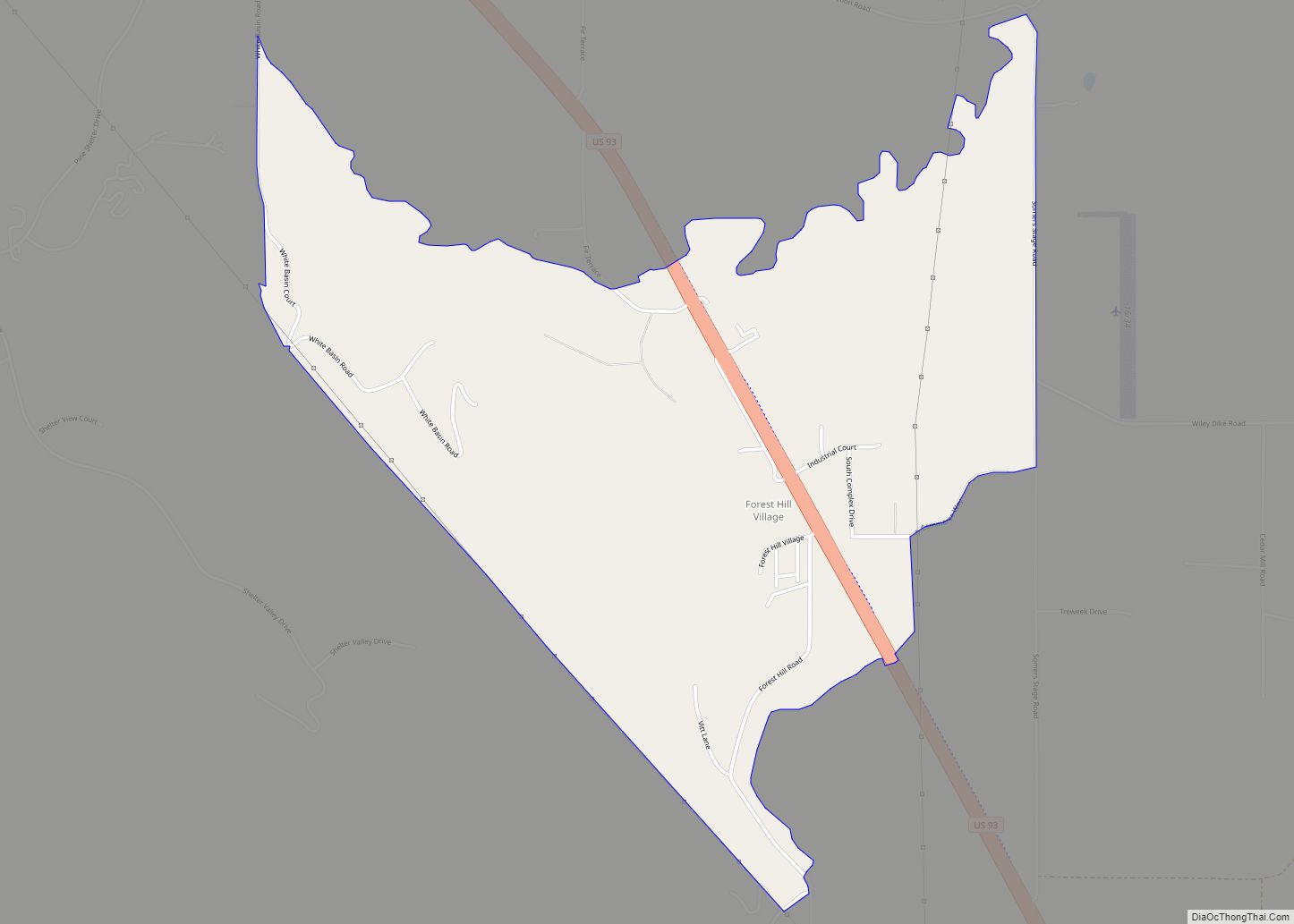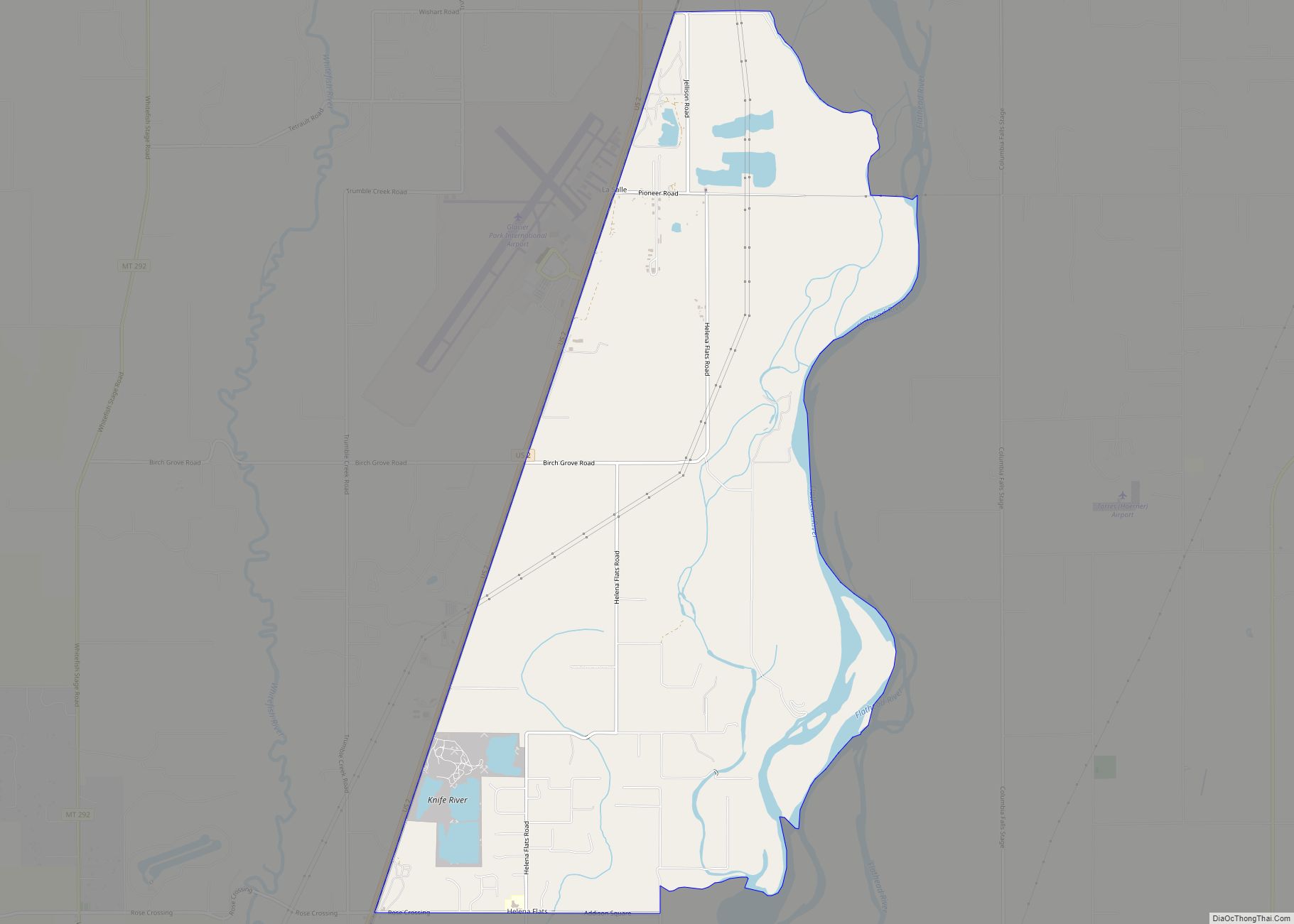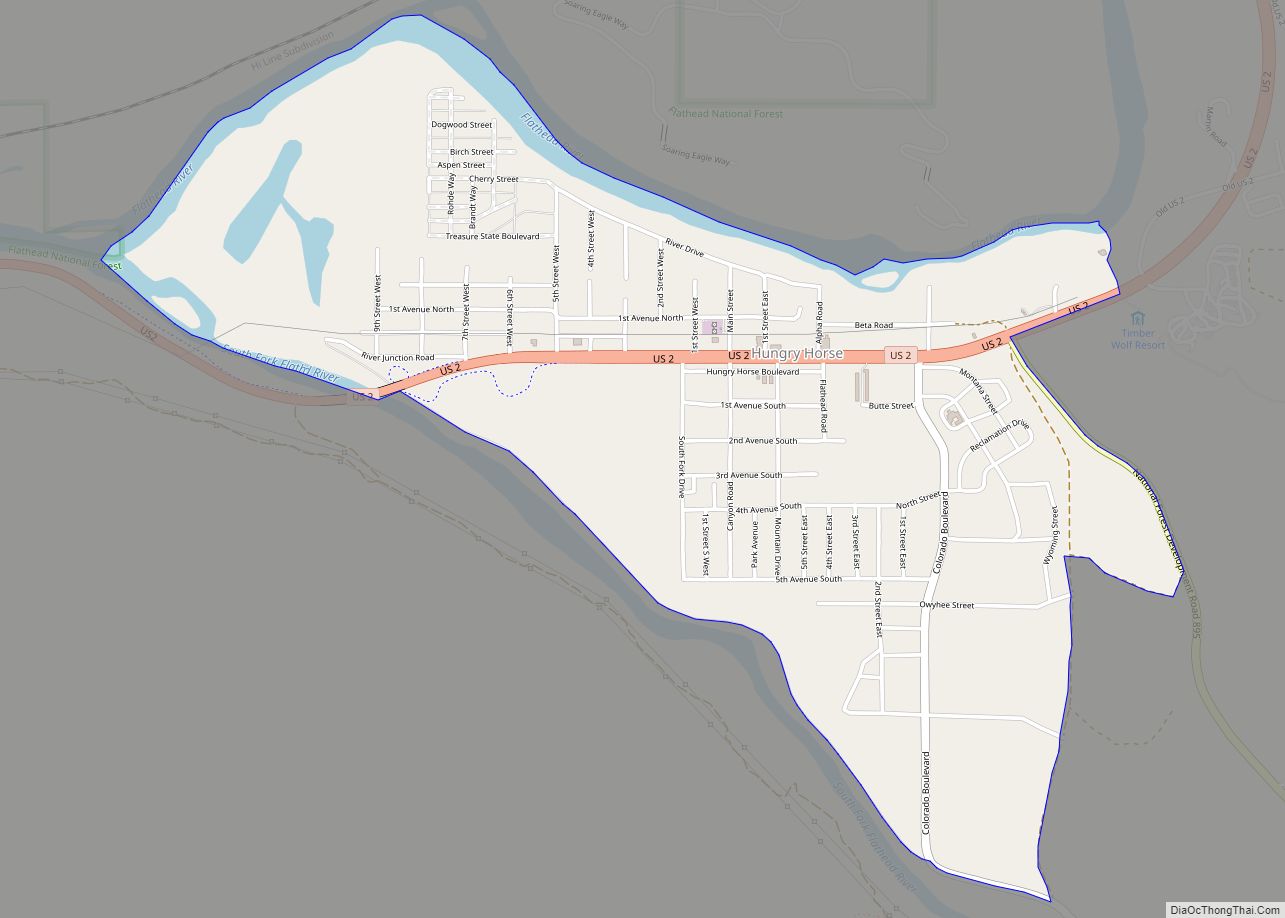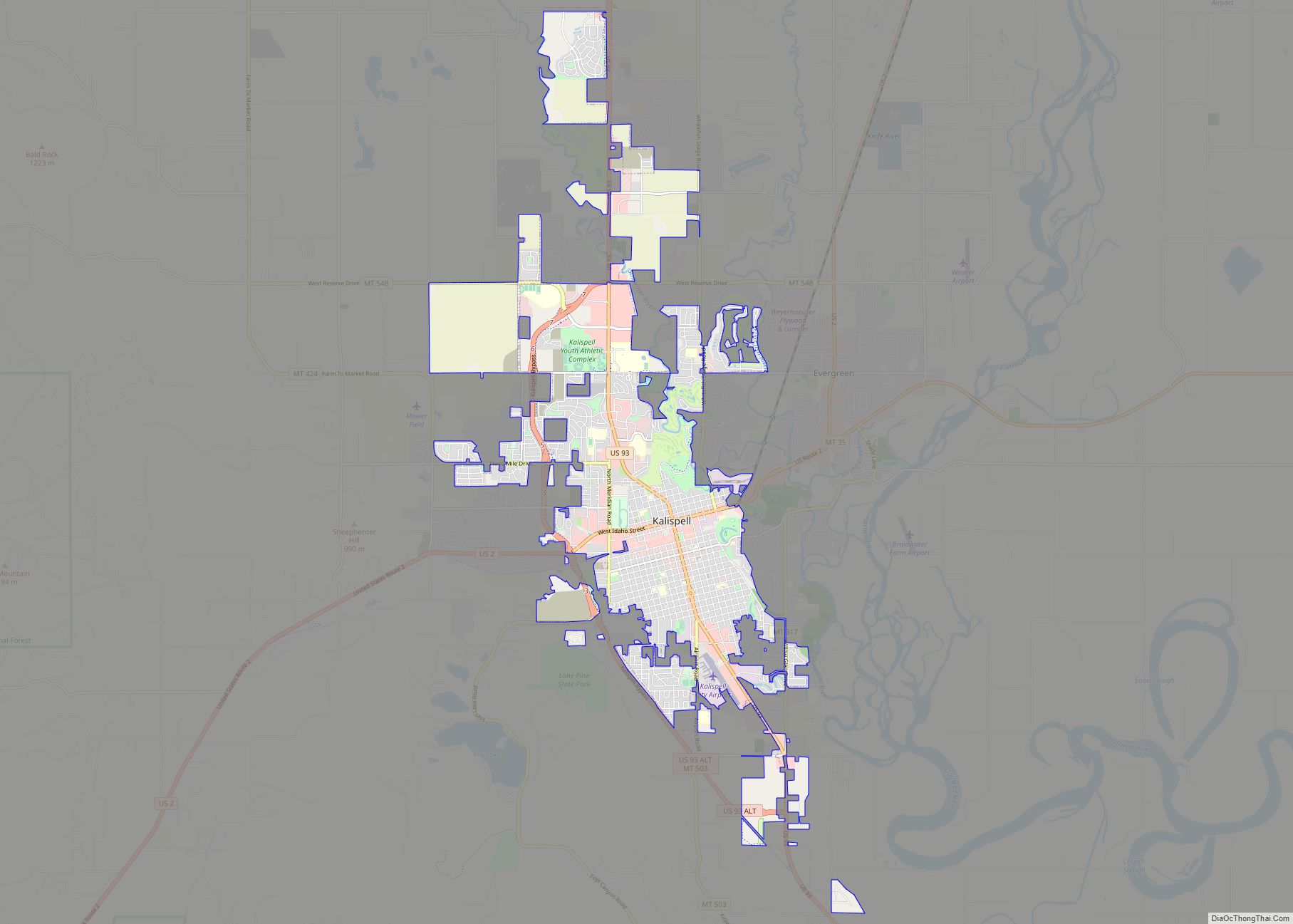Whitefish (Salish: epɫx̣ʷy̓u, “has whitefish”) is a city in Flathead County, Montana, United States. According to the 2020 United States Census, there were 7,751 people in the city.
| Name: | Whitefish city |
|---|---|
| LSAD Code: | 25 |
| LSAD Description: | city (suffix) |
| State: | Montana |
| County: | Flathead County |
| Elevation: | 3,028 ft (923 m) |
| Total Area: | 12.36 sq mi (32.00 km²) |
| Land Area: | 6.99 sq mi (18.09 km²) |
| Water Area: | 5.37 sq mi (13.91 km²) |
| Total Population: | 7,751 |
| Population Density: | 1,109.50/sq mi (428.40/km²) |
| ZIP code: | 59937 |
| Area code: | 406 |
| FIPS code: | 3079825 |
| GNISfeature ID: | 0793219 |
Online Interactive Map
Click on ![]() to view map in "full screen" mode.
to view map in "full screen" mode.
Whitefish location map. Where is Whitefish city?
History
Long before the first Europeans came to Whitefish, native American tribes inhabited the area, most notably the Kootenai, the Pend d’Oreille, and the Bitterroot Salish. The Kootenai lived in the area for more than 14,000 years, inhabiting the mountainous terrain west of the Continental Divide, and traveled east of the divide for occasional buffalo hunts. Though trappers, traders, and waves of westward immigrants passed through the area during the second half of the century, it wasn’t until 1883 that the first permanent settler, John Morton built a cabin on the shore of Whitefish Lake, just west of the mouth of the Whitefish River. Morton was joined by the local logging industry forefathers—including the Baker and Hutchinson brothers—in the early 1890s. Logging crews “boomed-up” their logs behind a dam built at the river mouth by the Boston & Montana Commercial Company, which, when opened, created a rush of water that helped float the logs down the river to Kalispell.
The Great Northern Railway was built through what is now Whitefish in 1904, which sparked the development of the town. The town incorporated in 1905. The area was originally known as Stumptown due to the abundant amount of timber that had to be cleared to build the town and railroad and because tree stumps were left in the streets throughout downtown. Early residents of the town worked for the railroad and nearby logging industries. In 2006, over 68,000 passengers embarked and disembarked through the historic Whitefish Depot, a stop on Amtrak’s Empire Builder line, with some percentage of those headed to the ski resort on Big Mountain.
Skiing has been part of the Whitefish area for more than 50 years. In 1937, the Whitefish Lake Ski Club obtained a special permit from the U.S. Forest Service enabling them to build cabins and trails in the Hell Roaring Creek region. Great Falls businessmen Ed Schenck and George Prentice recognized the area’s potential and, after World War II, began efforts to develop a full-fledged ski resort on the mountain with local people donating labor, preparing the slopes, even giving up free time to help push through an all-weather mountain road. On December 14, 1947, Schenck, Prentice, and a thousand townsfolk stood on the newly christened ski resort’s slopes to watch the brand new T-Bar lift bring their community vision to life.
The town started a curfew siren in 1919 that they called the “ding-dong ordinance”. The historic siren was restored to the new city hall.
Whitefish Road Map
Whitefish city Satellite Map
Geography
The town is located on the western side of the continental divide, near Glacier National Park. Whitefish Lake is a 5.2 square miles (13 km) natural lake with maximum length 5.8 miles (9.3 km) and width 1.4 miles (2.3 km) and is 233 feet (71 m) at its deepest. The Whitefish River bisects the town of Whitefish as it courses south by southeast to briefly join the Stillwater River before its flows enter the Flathead River.
The historic district of Whitefish is a neighborhood called “The Avenues”. This neighborhood is bordered by East 2nd Street to the north, Kalispell Avenue to the west, East 7th Street to the south, and Pine Avenue to the east. It is next to downtown, with many of its houses on the historic registry.
Climate
According to the Köppen Climate Classification system, Whitefish has a humid continental climate, abbreviated “Dfb” on climate maps. Large seasonal temperature differences typify this climatic region, with warm to hot (and often humid) summers and cold (sometimes severely cold) winters.
See also
Map of Montana State and its subdivision:- Beaverhead
- Big Horn
- Blaine
- Broadwater
- Carbon
- Carter
- Cascade
- Chouteau
- Custer
- Daniels
- Dawson
- Deer Lodge
- Fallon
- Fergus
- Flathead
- Gallatin
- Garfield
- Glacier
- Golden Valley
- Granite
- Hill
- Jefferson
- Judith Basin
- Lake
- Lewis and Clark
- Liberty
- Lincoln
- Madison
- McCone
- Meagher
- Mineral
- Missoula
- Musselshell
- Park
- Petroleum
- Phillips
- Pondera
- Powder River
- Powell
- Prairie
- Ravalli
- Richland
- Roosevelt
- Rosebud
- Sanders
- Sheridan
- Silver Bow
- Stillwater
- Sweet Grass
- Teton
- Toole
- Treasure
- Valley
- Wheatland
- Wibaux
- Yellowstone
- Alabama
- Alaska
- Arizona
- Arkansas
- California
- Colorado
- Connecticut
- Delaware
- District of Columbia
- Florida
- Georgia
- Hawaii
- Idaho
- Illinois
- Indiana
- Iowa
- Kansas
- Kentucky
- Louisiana
- Maine
- Maryland
- Massachusetts
- Michigan
- Minnesota
- Mississippi
- Missouri
- Montana
- Nebraska
- Nevada
- New Hampshire
- New Jersey
- New Mexico
- New York
- North Carolina
- North Dakota
- Ohio
- Oklahoma
- Oregon
- Pennsylvania
- Rhode Island
- South Carolina
- South Dakota
- Tennessee
- Texas
- Utah
- Vermont
- Virginia
- Washington
- West Virginia
- Wisconsin
- Wyoming
